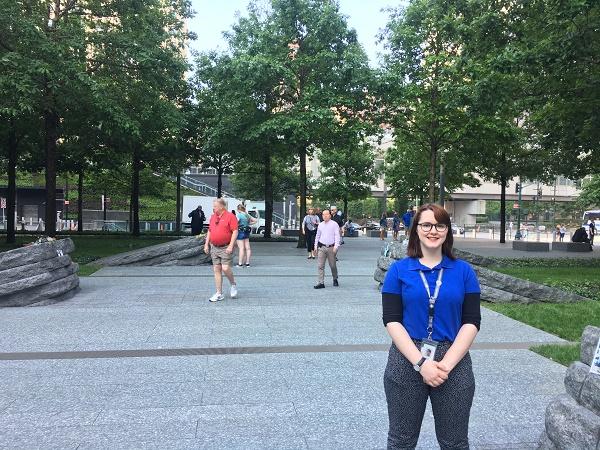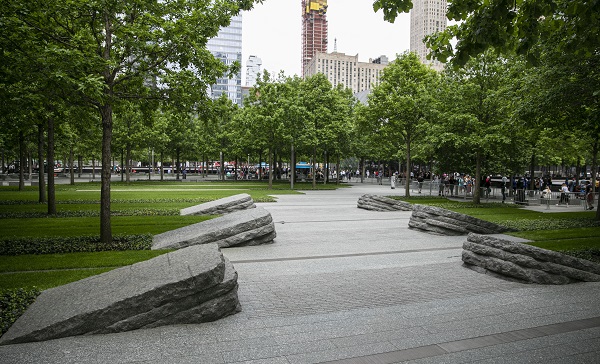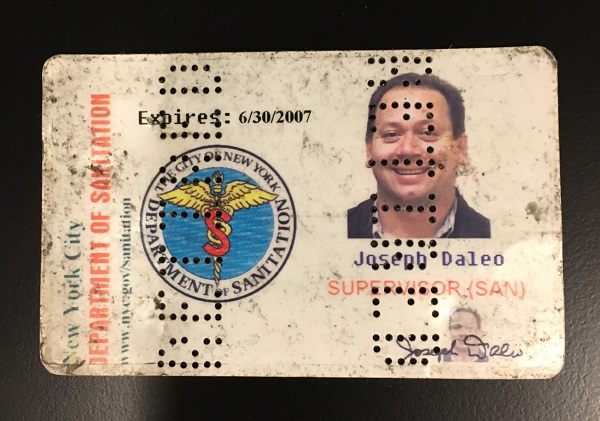Interpretive Guide and Daughter of a Firefighter Shares How Memorial Tours Deepen One's Perspective of 9/11
Interpretive Guide and Daughter of a Firefighter Shares How Memorial Tours Deepen One's Perspective of 9/11

Before I became an Interpretive Guide for the 9/11 Memorial & Museum, I visited as a member of the public. Like so many others who choose to visit the site, I remember that day. My sister, however, is too young to have such a memory. Even though she is a New Yorker and the daughter of a firefighter, she always felt disconnected from the communal memory of the attacks. Stepping onto the Memorial plaza gave my sister the opportunity to learn and remember the victims even though she did not remember the day itself.
This is one reason why visiting the Memorial is important. It gives those with memories of 9/11 and those without memories of 9/11 a place to come together, talk about the attacks and help each other find meaning in what happened at the site.
I always tell visitors at the end of my tours that if you walk around the plaza by yourself, you can feel the gravity of the site. You will see the 2,983 names, but you might not know their stories. The plaza and the two memorial pools provide a quiet place for remembrance in a busy city. While the name of each victim is memorialized in bronze, their stories are not obvious or written down on labels. This is because the plaza is first and foremost a place where families come to visit the loved ones they lost. By focusing on the commemorative nature of the site, the Memorial plaza also allows visitors to connect to the Memorial in different ways.
Each tour I give is broken up into three parts: the history of the World Trade Center complex, the events of the day and the stories of the victims. During this 45-minute walking tour we talk about the six key events of September 11, we see flowers and photographs left at names and we talk about the new World Trade Center, including the Memorial plaza. I focus on the fact that these names represent individuals and not just statistics. I want visitors to remember these victims as people with unique personalities, experiences and memories.
By taking a tour, visitors are actively remembering the 9/11 attacks. People on my tours connect to the stories I tell by touching the names of the victims, asking questions and sometimes shedding a tear. I always hope that afterward when visitors leave the Memorial plaza, they bring home a story. This allows us to continue actively remembering what happened at the site and those who were killed.
When you stand between the two memorial pools, you can’t help but feel that the 9/11 Memorial & Museum has a dual purpose: to give the victims’ family members a place to remember and to give the public a place to learn about the attacks. So as an Interpretive Guide, I hope that you will consider joining a tour on your visit. The more people who visit the plaza, the more people leave remembering Betty Ann Ong or Welles Remy Crowther. By remembering these individuals and their stories, we can make sure they will never be forgotten.
Learn more about the 9/11 Memorial & Museum's tour offerings.
By Katie Curran, Interpretive Guide, 9/11 Memorial & Museum
Previous Post
The 9/11 Memorial Glade Officially Dedicated

The 9/11 Memorial & Museum dedicated the Memorial Glade on the 17th anniversary of the official end of the recovery mission at Ground Zero.
Next Post
Artifacts from NYC Dept. of Sanitation Supervisor Tell the Story of Ongoing 9/11-related Health Effects

Following the 9/11 attacks, New York City Department of Sanitation Supervisor Joseph D’Aleo went to Ground Zero daily. He oversaw refuse hauling, dumpster removal and recycling procedures at the site. He also ensured that flagged truckloads of material were removed to Fresh Kills landfill for further sifting and cleared others for disposal at a Manhattan facility.